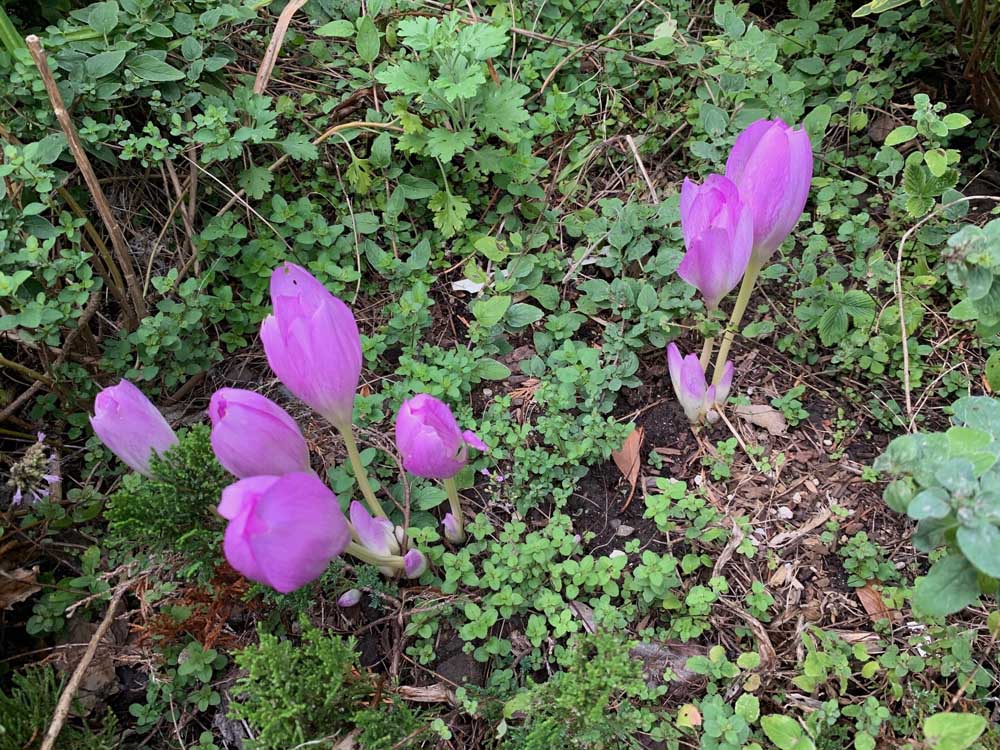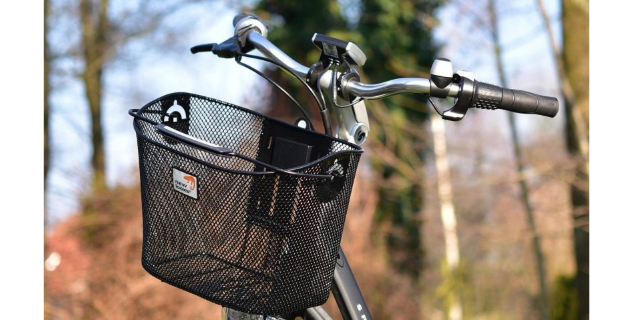GARDEN PLOTS: Plant poisons and other chemicals have medicinal uses, too
Published 7:00 am Wednesday, May 15, 2024

- Autumn crocus (Colchicum autumnale) contains an alkaloid called colchicine that is used in prescription medications to treat gout.
“Opium was the basis for a slew of nineteenth century pharmacological products. In laboratories, chemists isolated naturally occurring opiates such as codeine and morphine, revolutionizing the treatment of pain.”
— Marta McDowell, “Gardening Can Be Murder,” 2023
Last week, I wrote about various toxic plants commonly found in gardens and landscapes that have turned up in detective novels for more than a century as the means to commit the crime. Certainly, the opium poppy (Papaver somniferum) has captured the spotlight in several plots that have featured foul play by flora. A few examples include Charles Dickens’ “The Mystery of Edwin Drood (1870), Arthur Conan Doyle’s “The Man with the Twisted Lip” (1891), and Anne Perry’s “A Sunless Sea” (2012) and “Treachery at Lancaster Gate” (2016).
During World War I, Agatha Christie worked as a pharmacy technician where she became familiar with a variety of plant-based poisons, so it’s no surprise that they became go-to devices for malicious acts in her mystery novels. Lethal doses of morphine were used in her novel “The Murderous Affair at Styles” (1920), which spurred her prolific career. “Hickory Dickory Dock” (1955) and “By the Pricking of My Thumbs” (1968) featured opium as the modus operandi.
In most fictitious plots, the authors have people use plants to carry out their devious deeds, but as it turns out, Howard Ashman was not that far off the mark with his armed and dangerous plants in “The Little Shop of Horrors” (1982). Some plants do, in fact, harbor murderous intent by producing a variety of toxins that kill off their predators.
For example, plants in the Euphorbia family, including spurges and poinsettias, produce a milky substance that contains cyanogenic glucosides, or cyanide. Ordinarily, this toxin is bound up in sugar molecules in the plant’s tissue; however, the plant will respond when an insect starts chomping on it by triggering a chemical process that removes the sugar molecules, thus activating the poison. Clever girl!
Other natural plant toxins, called grayanotoxins, are found in the leaves, flowers, nectar and pollen of rhododendrons, azaleas, Japanese pieris and other plants in the Ericaceae family. Studies have indicated that not only do these plants generate grayanotoxins to kill insect predators, but they also produce them in the nectar and pollen in order to narrow the range of their pollinators to those that can tolerate the poison.
Whereas bumblebees don’t appear to be affected by these neurotoxins, some honeybees die after eating the pollen. Those that survive go on to create “mad honey,” which is the most common cause of grayanotoxin poisoning in humans. This is what killed Pompey the Great’s invading army in 65 BCE after King Mithridates VI of Pontus placed toxic honeycombs along the roadside leading into his city. Pompey’s soldiers became disoriented after eating the honey and were easily ambushed by Mithridates’ troops.
The saying, “What doesn’t kill you makes you stronger” applies to plant toxins because they have often been utilized as medicines. Cyanogenic glucosides, for example, have been used as anti-cancer agents; grayanotoxins are used in traditional medicines for hypertension, diabetes, abdominal pain and as an aphrodisiac.
As a matter of fact, more than a hundred plant-derived toxins and chemicals are used in medicines today (although most are not currently FDA approved). I found an extensive list of medicines derived from plants and their plant sources at thoughtco.com/drugs-and-medicine-made-from-plants-608413. Here are 10 chemicals used in medicines that are derived from plants I grow in my garden:
Berberine is an alkaloid present in parts of the common barberry shrub (Berberis vulgaris). It’s sold as an over-the-counter supplement to treat bacteria-related diarrhea.
Borneol is a terpene found in many garden herbs such as ginger, thyme, rosemary, sage and mint, as well as cannabis. It’s been used for centuries in traditional Chinese medicine to restore consciousness after a coma, heart attack or stroke. Studies have shown borneol can be effective in assisting the delivery of other drugs to the brain.
Colchicine is an alkaloid produced in the autumn crocus (Colchicum autumnale). It’s available in prescription drugs to treat gout flare-ups.
Cynarine is a chemical compound primarily found in the leaves of artichokes (Cynara scolymus). It’s available in the U.S. as an herbal supplement to support digestion and liver function.
Digoxin is a cardiotonic glycoside found in the flowers and leaves of purple foxgloves (Digitalis purpurea). It’s used in prescription drugs to treat heart failure and arrhythmia.
Menthol is a terpene found in the leaves of peppermint (Mentha x piperita) and other mint plants. It’s used in a variety of over the counter and prescription medications as a flavor additive and as a topical preparation to soothe muscle pain, minor sore throat pain and mouth irritation.
Taxol is a terpene and alkaloid compound found in the bark of Pacific yew trees (Taxus brevifolia). It’s used as a chemotherapy drug to treat different types of cancers.
Thymol is a terpene found in the leaves of thyme (Thymus vulgaris). The essential oil is used in a variety of over-the-counter antibacterial and antifungal products.
Valepotriates are chemical compounds found in the rhizomes of valerian plants (Valerian officinalis). Valerian root is sold as an herbal supplement to treat insomnia. Research indicates valepotriates might have antidepressant and anti-anxiety effects.
Vincamine is an alkaloid present in the leaves of the common periwinkle plant (Vinca minor). The synthetic version of vincamine, called vinpocetine, is used in herbal supplements to aid brain function and memory. For decades, it’s been used in prescription drugs in Europe to treat dementia.
Who knew the toxins in so many of our garden plants have a softer side, too?






